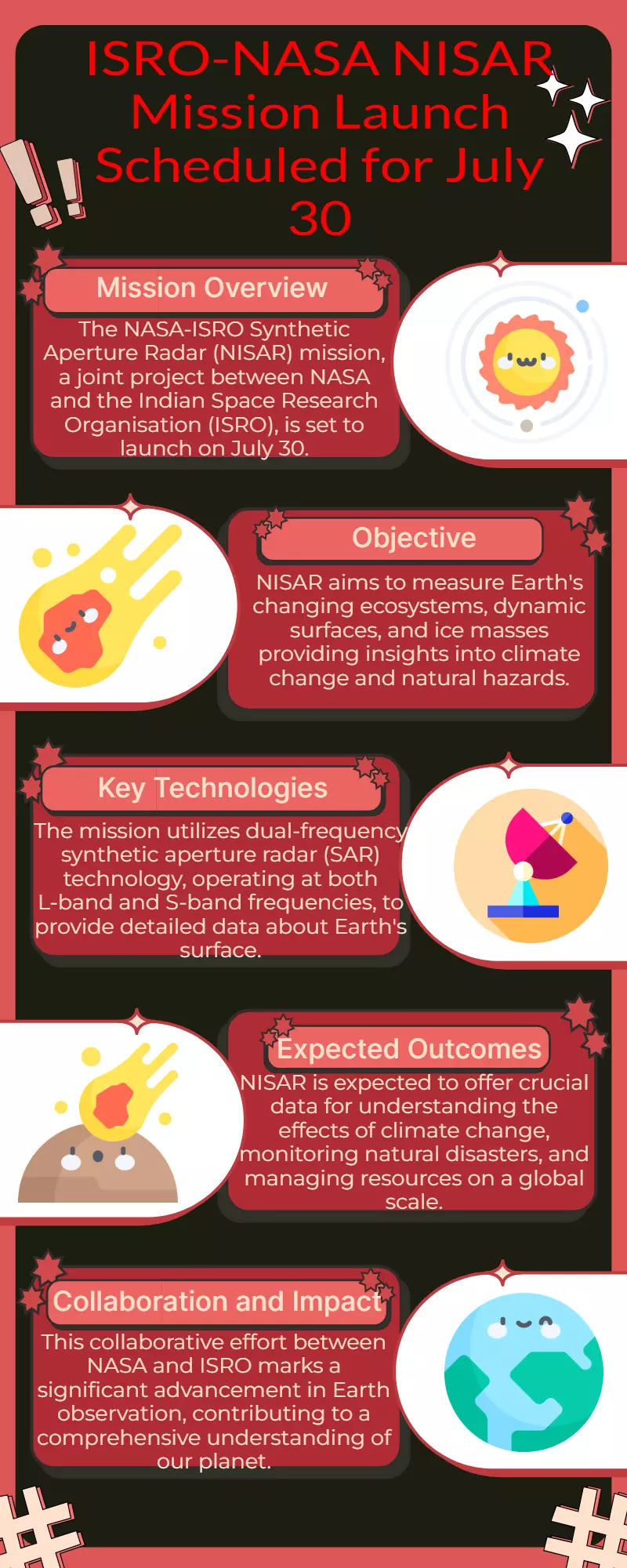ISRO-NASA NISAR Mission Launching on July 30

By : Krishna Mishra
Isro-Nasa NISAR Mission to Launch on July 30 from Sriharikota
In a significant step for global space collaboration, the Indian Space Research Organisation (Isro) and the US National Aeronautics and Space Administration (Nasa) are set to launch their joint Earth-observation satellite mission, Nasa-Isro Synthetic Aperture Radar (NISAR), on July 30 at 5:40 PM IST from the Satish Dhawan Space Centre, Sriharikota.
This $1.5 billion mission marks the first joint satellite project between India and the US and is the most expensive collaboration between the two nations in the field of space. The launch will use India’s Geosynchronous Satellite Launch Vehicle (GSLV).
Advanced Earth-Monitoring Capabilities
NISAR is equipped with the world’s first dual-frequency radar system in space, combining Nasa’s L-band and Isro’s S-band synthetic aperture radar technologies. It will map Earth's land and ice surfaces with unprecedented 3D precision, completing a global orbit every 12 days.
The satellite will help monitor:
Ecosystem shifts and biomass distribution
Earthquakes, landslides, and volcano-induced surface deformation
Glacier and ice sheet movements
Soil moisture and groundwater levels
Urban expansion and sea-level changes
Its ability to penetrate vegetation, clouds, and operate both day and night ensures reliable data collection regardless of weather.
Open-Source Data for Global Use
NISAR’s data will be freely available to scientists, emergency responders, and policymakers. During natural disasters such as floods or earthquakes, the mission promises near-real-time data access to aid global crisis response and climate resilience.
Symbol of Technological Partnership
The mission reflects a decade-long partnership between Isro and Nasa, with teams from both countries collaborating on final integration and testing. It also showcases India’s leadership in launch operations and engineering capabilities, including the assembly of a 12-meter deployable radar antenna.
NISAR stands not only as a technological milestone but also as a symbol of international cooperation in science and sustainability, offering insights that could help mitigate natural disasters, support agriculture, and improve environmental management worldwide.
